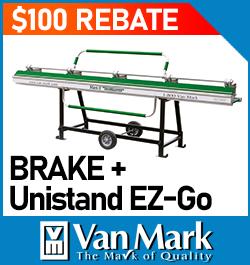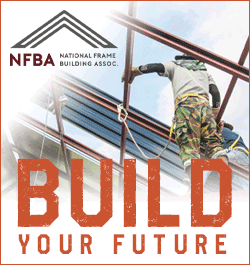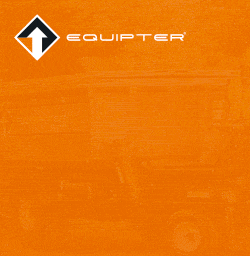3 Things All the Best Caulk Guns Share

By Sashco.
The benefits that make investing in the perfect caulk gun worth it.
Caulk guns are often thought of as disposable, a cheap tool for short-term jobs that can easily be thrown away. However, these cheap guns can become cumbersome when faced with a big caulk project, leading to a shoddy caulk job because they break so easily and need to be replaced. A good caulk gun makes all the difference when it comes to cutting back on time and fatigue. Read on to learn about the many benefits a quality caulk gun delivers.
1 - Extrusion: the importance of a good bead
Caulk bead quality
A good caulk bead isn’t just pretty—it ensures a quality job that will hold up over time. A good caulk gun delivers a smooth, continuous bead of caulk, which is crucial for adhesion, aesthetic and clean-up. With a smooth bead from a quality caulk gun, you can achieve better contact between your caulk and the substrate. That means more reliable adhesion and that you won’t have as much of a mess to clean up afterward. You also won’t have to spend as much time smoothing out a caulk bead that already looks spectacular.
Ratchet rod versus smooth rod
If you apply caulk often, you’re probably familiar with the two types of rods on a caulk gun. The ratchet rod (the old-school mechanism) works in set increments with a thrust ratio of 5:1, which means that it’s harder to control the flow of caulk.
With an improved thrust ratio of 10:1 (or more), a smooth rod caulk gun requires much less pressure to push out a caulk bead. You can also control your bead much more efficiently since you can pull the trigger in small increments if needed. But even a cheaper smooth rod gun will perform poorly, with less control over the bead and often the push rod won’t be square to the cartridge.
Thrust ratio
Thrust ratio is the make-it-or-break-it component to a successful caulking job. With a 10:1 thrust ratio; 10 pounds of force are applied to the tube for each 1 pound of pressure you apply to the trigger. If your muscles are fighting the gun, you can’t pay proper attention to laying a good bead.
While your caulk gun’s ratio directly impacts how easily your gun extrudes caulk, there are a couple of other factors that affect your thrust ratio. The thicker the type of caulk, the more thrust ratio you’ll need to sustain a good bead. Low temperatures will often thicken caulk and also require a greater thrust ratio.
Lower cost caulk guns tend to have a smaller thrust ratio. If you’re working with a material with higher viscosity like cement, you’ll want a thrust ratio of at least 10:1, if not more.
Poker rod
Most caulk cartridges have an inner foil seal beneath the nozzle that needs to be broken before use. A good caulk gun should come with a thin poker rod attached to puncture this seal. While you can always fish around for a nail on the job site, having a poker rod on hand saves you time and a hassle.
Nozzle cutter
Many caulk guns, including cheaper options, also come with a built-in nozzle cutter. While this is a thoughtful feature, we don’t recommend using it. Nozzle cutters in caulk guns slice the tip of the caulk nozzle at a 90-degree angle, which will give you a large, unruly bead. For best results, cut the nozzle with a sharp utility knife at a 45-degree angle, which will help you caulk with more precision and get better contact with the substrate.
2 - Hold and maneuverability
A neat caulking job requires precise maneuverability of the caulk gun—if it slips from your grip, you’ll have some clean-up to do. Cheaper guns often have a gap at the trigger that can pinch your skin when you’re trying to caulk at a difficult angle. On the other hand, a quality caulk gun should be thoughtfully designed to allow you to keep a good grip on the tool and tackle corners with ease and comfort.
Good grip
For difficult angles, a good grip is crucial. Well-made caulk guns often come with grips and should be comfortable not only to handle while extruding bead but while loading and unloading cartridges as well.
Tackles corners well
Caulking corners gets a lot easier with a revolving frame, which rotates the cartridge to maintain the bead in and out of corners and tricky angles.
Weight
A caulk gun’s weight might not seem important when you pick it up for the first time, but when you’re using it for hours on the job, a heavy gun will tire out your grip and make it harder to keep your caulk bead neat and even. A good caulk gun should feel relatively lightweight and balanced in your hand for sustained periods of use.
3 - Minimizing Waste
One of the downsides to caulking is waste. Even when you release the trigger, the cartridge often continues to emit caulk, which means that you’re cleaning up frequently and wasting caulk. Caulk beads don’t stop for two reasons:
-
The act of pushing the caulk out of the gun compresses the material. When the trigger is released, the caulk tries to expand back to its original volume.
-
Occasionally, air bubbles get trapped in the cartridge. When those compressed bubbles expand, they push the caulk outward.
Stopping the caulk
A good caulk gun will have a mechanism that releases pressure from the back of the plunger as you release the trigger, ensuring that the gun isn’t forcing caulk out of the tube when you don’t want it to. Since the caulk still wants to expand, this mechanism won’t stop the bead from coming out of the nozzle entirely.
A cartridge that stops itself with the Alyster Plunger
We like our caulk and don’t want to see it wasted. That’s why we invented the Alyster Plunger, which we put in the end of each of our cartridges to stop extrusion of the caulk bead when the caulk gun trigger is released.
Typical cartridges have stiff, flat (read: boring) plungers at the end that rest against the gun’s push plate. The Alyster Plunger has a flexible dome that is compressed by the caulk gun during use. When the pressure is released, the dome reforms, creating a suction that pulls the caulk back into the tube and stops the overflow at the nozzle. We’re proud of the Alyster Plunger because it means that less of our product gets wasted during each use, ensuring that you get every ounce of caulk that you need.
Caulking with confidence
Investing in a good caulk gun can transform your tricky caulking job into a quick, effortless part of the project with a better-looking caulk bead, easier handling and reduced waste.
We hope this article has helped you and your crew see that investing in a quality caulk gun is like using your favorite quality brand of saw or hammer: it helps you do your best jobs and ups your work performance in both speed and quality. Applying caulk professionally is essential to preventing leaks and ensuring the long-lasting quality of the job, and a good caulk gun (along with quality caulk!) is the key to doing it well.
Learn more about Sashco in their RoofersCoffeeShop® Directory or visit www.sashco.com
Original article source: Sashco




















Comments
Leave a Reply
Have an account? Login to leave a comment!
Sign In